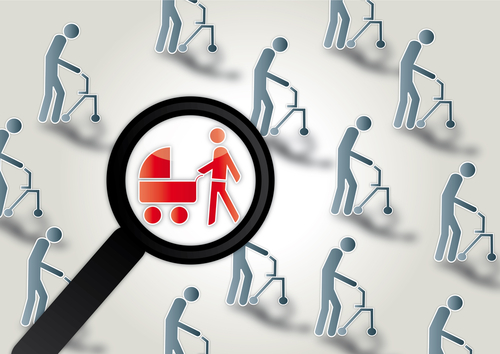Business and Economy
As births fall, economies face ‘demographic headwinds’ to growth from 2008 financial crisis
NEW YORK – Nancy Strumwasser, a high school teacher from Mountain Lakes, New Jersey, always thought she’d have two children. But the layoffs that swept over the U.S. economy around the time her son was born six years ago helped change her mind. Though she and her husband, a market researcher, managed to keep their jobs, she fears they won’t be so fortunate next time.
“After we had a kid in 2009, I thought, ‘This is not happening again,”’ says Strumwasser, 41, adding, “I never really felt comfortable about jobs, how solid they can be.”
The 2008 financial crisis did more than wipe out billions in wealth and millions of jobs. It also sent birth rates tumbling around the world as couples found themselves too short of money or too fearful about their finances to have children. Six years later, birth rates haven’t bounced back.
For those who fear an overcrowded planet, this is good news. For the economy, not so good.
We tend to think economic growth comes from working harder and smarter. But economists attribute up to a third of it to more people joining the workforce each year than leaving it. The result is more producing, earning and spending.
Now this secret fuel of the economy, rarely missing and little noticed, is running out.
“For the first time since World War II, we’re no longer getting a tailwind,” says Russ Koesterich, chief investment strategist at BlackRock, the world’s largest money manager. “You’re going to create fewer jobs. … All else equal, wage growth will be slower.”
Births are falling in China, Japan, the United States, Germany, Italy and nearly all other European countries. Studies have shown that births drop when unemployment rises, such as during the Great Depression of the 1930s. Birth rates have fallen the most in some regions that were hardest hit by the financial crisis.
In the United States, three-quarters of people surveyed by Gallup last year said the main reason couples weren’t having more children was a lack of money or fear of the economy.
The trend emerges as a gauge of future economic health – the growth in the pool of potential workers, ages 20-64 – is signalling trouble ahead. This labour pool had expanded for decades, thanks to the vast generation of baby boomers. Now the boomers are retiring, and there are barely enough new workers to replace them, let alone add to their numbers.
Growth in the working-age population has halted in developed countries overall. Even in France and the United Kingdom, with relatively healthy birth rates, growth in the labour pool has slowed dramatically. In Japan, Germany and Italy, the labour pool is shrinking.
“It’s like health – you only realize it exists until you don’t have it,” says Alejandro Macarron Larumbe of Demographic Renaissance, a think-tank in Madrid.
The drop in birth rates is rooted in the 1960s, when many women entered the workforce for the first time and couples decided to have smaller families. Births did begin rising in many countries in the new millennium. But then the financial crisis struck. Stocks and home values plummeted, blowing a hole in household finances, and tens of millions of people lost jobs. Many couples delayed having children or decided to have none at all.
Couples in the world’s five biggest developed economies – the United States, Japan, Germany, France and the United Kingdom – had 350,000 fewer babies in 2012 than in 2008, a drop of nearly 5 per cent. The United Nations forecasts that women in those countries will have an average 1.7 children in their lifetimes. Demographers say the fertility rate needs to reach 2.1 just to replace people dying and keep populations constant.
The effects on economies, personal wealth and living standards are far reaching:
– A return to “normal” growth is unlikely: Economic growth of 3 per cent a year in developed countries, the average over four decades, had been considered a natural rate of expansion, sure to return once damage from the global downturn faded. But many economists argue that that pace can’t be sustained without a surge of new workers. The Congressional Budget Office has estimated that the U.S. economy will grow 3 per cent or so in each of the next three years, then slow to an average 2.3 per cent for next eight years. The main reason: Not enough new workers.
– Reduced pay and lifestyles: Slower economic growth will limit wage gains and make it difficult for middle-class families to raise their living standards, and for those in poverty to escape it. One measure of living standards is already signalling trouble: Gross domestic product per capita – the value of goods and services a country produces per person – fell 1 per cent in the five biggest developed countries from the start of 2008 through 2012, according to the World Bank.
– A drag on household wealth: Slower economic growth means companies will generate lower profits, thereby weighing down stock prices. And the share of people in the population at the age when they tend to invest in stocks and homes is set to fall, too. All else equal, that implies stagnant or lower values. Homes are the biggest source of wealth for most middle-class families.
____
AP researcher Fu Ting in Shanghai and AP writers Frank Jordans in Berlin, Colleen Barry in Milan and Youkyung Lee in Seoul, South Korea, contributed to this report.






















